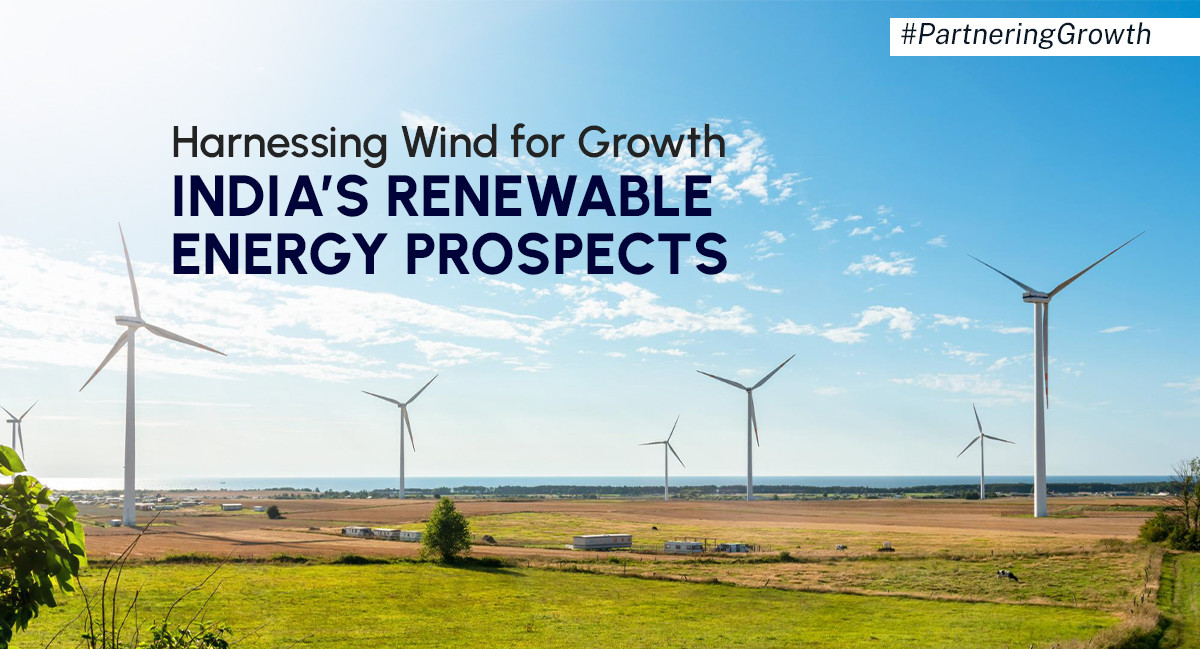


Wind energy has emerged as a cornerstone of India’s renewable energy strategy. With a growing installed capacity, untapped onshore and offshore potential, and innovative hybrid solutions, wind power is a key enabler of India’s goal to achieve 500 GW of renewable energy by 2030. Beyond electricity generation, wind energy also supports industrial decarbonization and economic growth.
Installed Capacity and Growth Trends
India’s installed wind capacity stood at 50.04 GW as of March 31, 2025, making it the 4th largest wind market globally. The financial year 2024–25 added 4.15 GW, up from 3.25 GW the previous year, reflecting steady growth despite sectoral challenges. By June 2025 (Q2 FY26), cumulative wind capacity rose further to 51.6 GW, marking a 3.3% increase over March 2025. Gujarat led the additions with 1.14 GW, followed by Karnataka (363.6 MW), Tamil Nadu (90 MW), Maharashtra (23.1 MW), and Andhra Pradesh (20.6 MW). These numbers indicate that wind power continues to play a vital role in balancing India’s renewable energy mix and providing reliable electricity for grids.
Onshore and Offshore Potential
India’s onshore wind potential is estimated at 695 GW at 120-meter hub height and up to 1,164 GW at 150-meter, with key regions including Gujarat, Rajasthan, Karnataka, Maharashtra, Tamil Nadu, Andhra Pradesh, Telangana, and Madhya Pradesh. Offshore wind projects are also under active development, with pilot installations and site assessments along the coasts of Gujarat and Tamil Nadu. These projects could dramatically increase capacity without requiring additional land resources.
Innovations and Emerging Trends
Wind energy is evolving beyond conventional installations. Hybrid wind-solar projects optimise land use and provide smoother, more reliable energy output. Repowering older turbines is improving efficiency and maximising output from existing infrastructure. The sector is also linked to India’s green hydrogen ambitions, using clean electricity to produce hydrogen for industrial and energy applications.
Economic and Industrial Impact
India is a leading global hub for wind turbine manufacturing, with installed capacity reaching approximately 51.67 GW as of August 12, 2025, up from 49.4 GW in mid-2024. Wind energy is stimulating domestic manufacturing of turbines and components, creating skilled jobs, and strengthening India’s industrial ecosystem. Scaling up to 15 GW annual installations by 2030 is projected to create approximately 154,000 new jobs while enhancing the manufacturing ecosystem and reducing costs. By supporting utility-scale projects and hybrid energy solutions, wind power contributes to both energy security and sustainable economic growth.
A Road Ahead
The future of wind energy in India lies in scaling hybrid projects, advancing offshore development, and deploying next-generation technologies. Increased investment in domestic manufacturing, integration with energy storage, and alignment with green hydrogen production will unlock the sector’s full potential. With coordinated policy support and technological innovation, wind energy can reliably meet India’s growing power needs while driving decarbonization.
Wind energy in India is evolving into a strategically integrated, technologically advanced, and economically impactful sector. By combining onshore and offshore potential, hybrid solutions, and industrial linkages, India is positioning itself to not only achieve its renewable targets but also create a resilient, sustainable energy ecosystem that powers growth for the next decade and beyond.